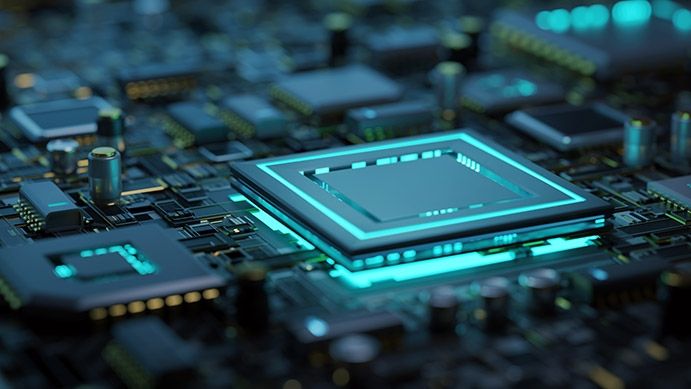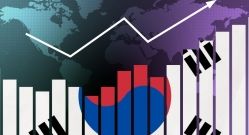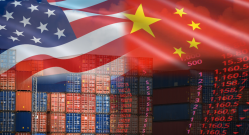
The CHIPS Act, or the quest for technological sovereignty
The burgeoning semiconductor industry of the 1950s was highly integrated, involving players who spanned the entire value chain, from design to manufacturing, assembly, testing and packaging. As time went on, the industry embarked on a frenetic race towards miniaturisation, resulting in a significant increase in the density of transistors that could be etched onto each square millimetre of silicon wafer. Since 1965, this density has doubled roughly every 18 months. The semiconductor industry today can etch as many as 300 million transistors per square millimetre. But this has also resulted in a fragmented and globalised industry.
Semiconductors are found in the smallest piece of consumer, business or military equipment, however simple or sophisticated. They are seen as the new oil of the digital age and are at the centre of challenges having to do with geopolitics and technological sovereignty.
Fragmentation and globalisation
The frantic race towards miniaturisation has fuelled not only constant growth in components’ computing power and memory storage capacity but also falling costs. Ultimately, this means ever more sophisticated components are available for little cost – components that are the product of expensive R&D and design activity. Fabrication processes are increasingly complex, requiring huge investment in manufacturing facilities and equipment.
In the early 1980s, this phenomenon gradually led to the concept of “fabless” manufacturing, profoundly altering the semiconductor industry supply chain. Sector players – mainly American, European and Japanese, and up to that point vertically integrated – opted to specialise in the high added value activities of R&D and design. At the same time, they gradually pulled out of the more capital-intensive activities of manufacturing and assembly, testing and packaging (ATP). This state of affairs favoured the emergence of new players specialising in these areas, particularly in Taiwan, South Korea and China. All benefited from systematic financial support from their governments to help them develop.
Concentration, domination and vulnerability
Today, the centre of gravity of the semiconductor industry supply chain is heavily tilted towards Asia. While over 75% of R&D activity is still concentrated in the US and 20% in Western Europe, 90% of fabrication capacity is located in Asia, with 51% of foundries in Taiwan, 22% in China and 11% in South Korea, for a total of 84% in these three countries. Taiwan, which accounts for 92% of the world’s most advanced semiconductor manufacturing capacity, enjoys a virtual monopoly in cutting-edge 7-nm to 5-nm etching. Over 80% of ATP activity is concentrated in Asia, mainly in China.
In 2020, the Covid-19 pandemic exposed just how vulnerable countries and some of their industries were as a result of the complex, globalised and fragmented semiconductor supply chain.
Amid geopolitical tension, the leading countries – China, South Korea, the United States, Japan, Taiwan and the European Union – have all since been on a quest for technological supremacy and strategic autonomy as they work to rebuild or strengthen their independence in relation to chip manufacturing.
The US unveils it CHIPS Act
Against this backdrop, the first legislative texts aimed at stimulating domestic high-tech research and rebuilding semiconductor manufacturing capacity as a priority in the US date from 2019-2020. This work culminated in the Creating Helpful Incentives to Produce Semiconductors and Science Act, or CHIPS and Science Act, of 2022, which was eventually ratified and enacted into law by the US Government on 9 August 2022. This was followed by the Inflation Reduction Act, or IRA, of 2022, also designed to encourage production on US soil more broadly, which was ratified and enacted into law on 16 August 2022.
The CHIPS Act is an overall legislative package worth $280 billion over ten years, with $52.7 billion of this total earmarked for semiconductors in the form of public funding for R&D, training, the construction of manufacturing facilities and specific semiconductor needs related to national defence. There is also a 25% tax credit, equating to total funding of around $24 billion, for any investment in manufacturing facilities on US soil provided construction begins before 2027.
America’s twin objectives
The CHIPS Act of 2022 aims to revitalise the US semiconductor industry and promote the US economy and national sovereignty. Since 2018, the US has also exercised strict control over semiconductor exports to China, further tightened by amendments to its policy in October 2022. These latest measures extend to any company anywhere in the world that uses American components and equipment in manufacturing its products. They also target various types of technology other than semiconductors, thereby making it more complicated for foreign companies that operate in the fields in question to export to China.
Simultaneously implementing these two policies enables the US to achieve twin objectives: on the one hand, strengthening domestic semiconductor research and making the supply chain more secure, and on the other, broadening the scope of technological surveillance, notably to cover supercomputers, artificial intelligence and software.
How will this affect the European industry? The example of ASML
One European company caught up in the tense geopolitical atmosphere between the US and China is ASML, the global leader in highly sophisticated lithography equipment for etching transistors onto silicon wafers. Netherlands-based ASML is also the only equipment supplier in this field to use extreme ultraviolet (EUV) light for extremely fine etching at nodes of 7-nm, 5-nm or below.
Because it uses American components in manufacturing its equipment, ASML is affected by US restrictions on exports to China.
What strategy should Europe adopt?
The European Union has taken a similar approach, adopting the EU CHIPS Act in February 2022. Here too, the goal is to regain technological sovereignty and secure a degree of control over the semiconductor supply chain by leveraging Europe’s strengths in R&D and integrating advanced chip manufacturing (at nodes of 2-nm and below). The EU aims to double European production by 2030, attaining 20% of global production against today’s 10%.
Through this legislative package equating to €42 billion of public funding, the EU hopes to attract private investors to boost the total amount of investment to around €90 billion. Key players in the industry have already expressed interest in investing in manufacturing sites: Infineon (Germany) plans to invest €5 billion in a plant in Dresden; Intel (US) is investing in a plant in Magdeburg as part of an overall planned investment in Europe totalling €80 billion over ten years; STMicroelectronics (France-Italy) plans to invest €730 million in a plant in Italy as well as €5.7 billion in a facility in Crolles, France as part of a joint venture with Global Foundries (US); and TSMC (Taiwan) is in advanced talks over a plant in Dresden, Germany.











